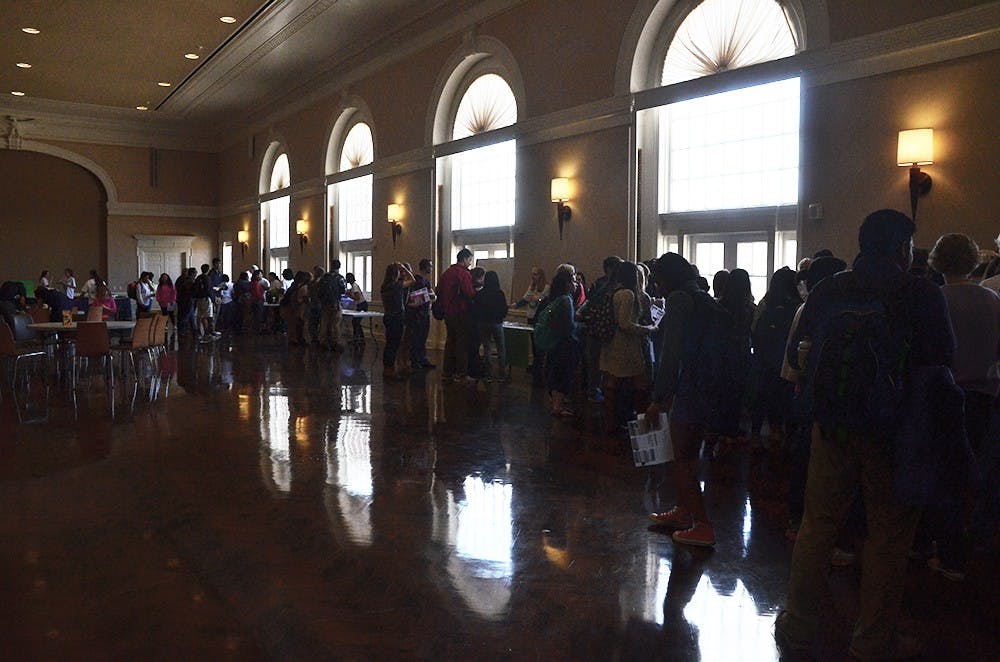The Green Dot Program held its launch event at the University’s Amphitheatre Thursday in an effort to familiarize the University community attendees with the program and to gather information on sexual assault bystander intervention. The program aims not only to train students to become better bystanders but also to encourage community engagement and mobilization against sexual assault and violence.
Nicole Thomas, prevention coordinator for the Office of the Dean of Students, said the program was specially tailored for the University in order to allow more student involvement and build upon faculty and staff participation.
“It’s really about meeting people where they are,” Thomas said. “A lot of bystander intervention programs ask for people to step in no matter what and to kind of be this super hero or a vigilante. What’s great about Green Dot is that it says that you’re going to have barriers to intervening — everybody does — and instead of just trying to ignore or figure out how to solve them, it really teaches people ways to know what they are and then to choose other avenues of intervention.”
The launch included different stations where attendees could share personal experiences, discuss barriers to intervention and talk about measures that could be taken in order to be a more proactive bystander.
“It’s this mentality that nobody has to do everything but everyone has to do something, so people are getting involved and deciding to give some of their time,” Thomas said.
Emily Renda, project coordinator in the Office of the Vice President for Student Affairs, said the launch was intended to let people within the community really understand what Green Dot is.
“It’s community interventions, relational interventions and individual interventions,” Renda said. “To put that in context, a lot of other prevention programs that come through try to do those things, but they try to do them in either 45 minutes or they focus on one of the areas of the model … which is a lot of talk and not a lot of action.”
Renda said faculty and staff will also be involved with the program, a factor which will hopefully expose students to issues of sexual violence on a smaller, less intimidating scale.
“Not everybody is going to take intro to gender studies,” Renda said. “So how do you expose them to issues of gender equality, social inequality, issues of violence without having to hijack a whole curriculum?”
Over a hundred students, faculty and staff were trained through Green Dot in January, and 63 students have been trained since then. Thomas said project coordinators are also organizing an abbreviated version of the training program to be completed by additional faculty and staff over the summer.
“I think that the [faculty members] who have been really engaged really appreciate that the invitation was extended, so that this was something much larger than just a student initiative or something that the Office of the Dean of Students was doing,” Thomas said.
Thomas said Green Dot was chosen over other bystander intervention programs because of research demonstrating its positive effects.
“It is one of the most well-researched programs,” Thomas said. “We’re seeing researchers looking at communities where Green Dot is and they’re seeing a 40 or 50 percent reduction in violent instances. We liked it because it’s not just something at the college level — we can eventually get community folks involved and eventually get middle and high school folks involved to really span more of Charlottesville.”
Assistant Dean of Students Nicole Eramo said she has been working with Green Dot for a few years, and oversees Thomas’ coordination.
“My excitement for this program in particular is that it’s not just about training people to be better bystanders and it’s not just about training students,” Eramo said. “It’s about a community mobilization effort from faculty, staff and students from across the board to really change the culture of the institution. My hope is that we actually do change our culture.”







